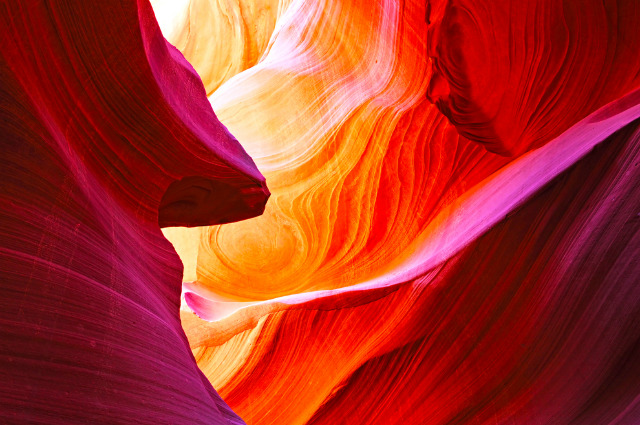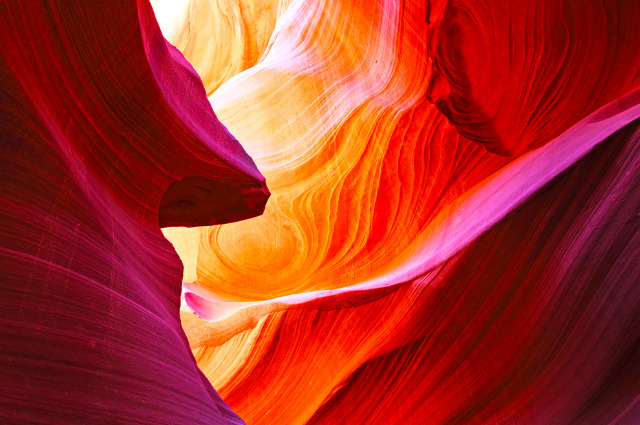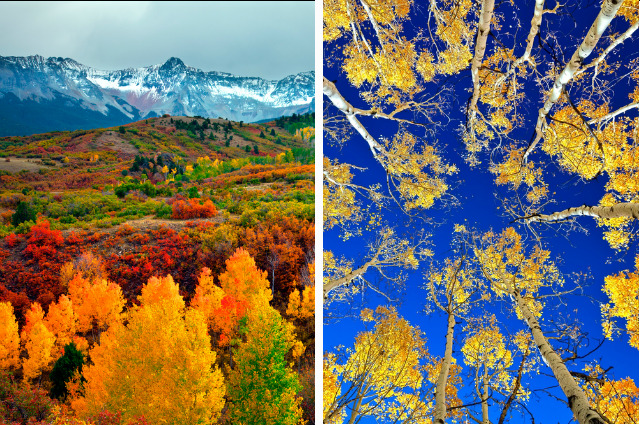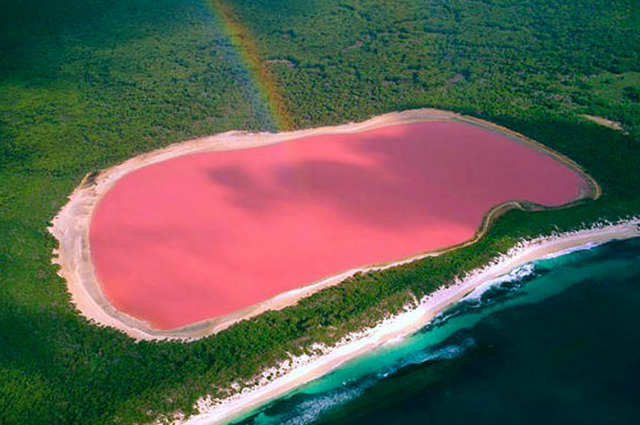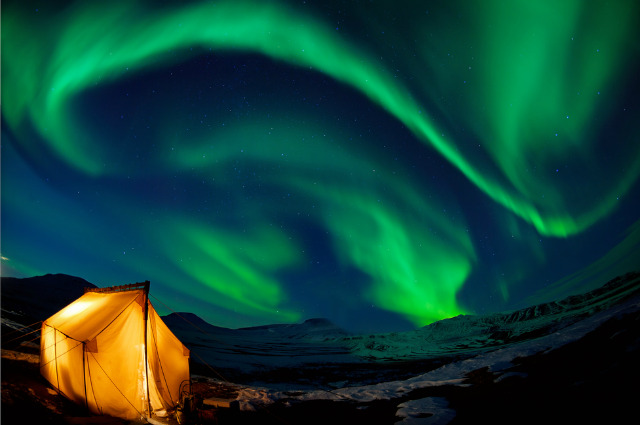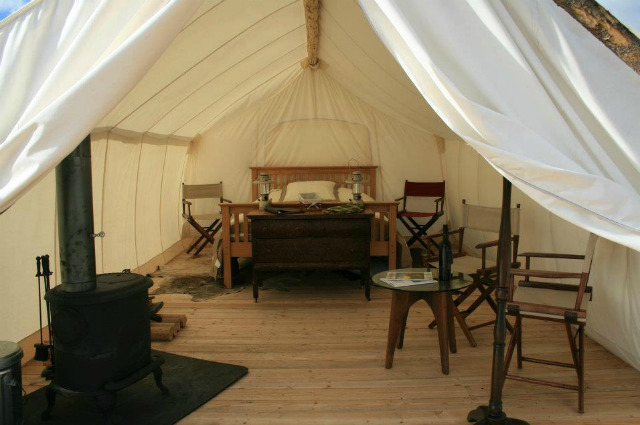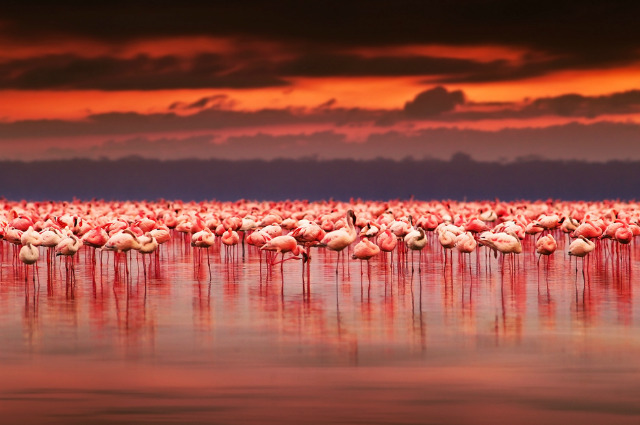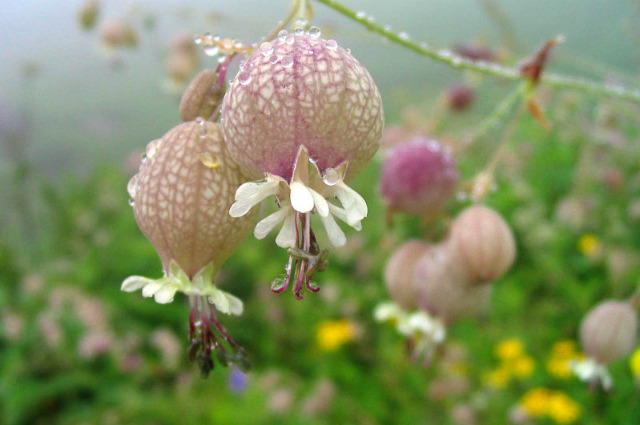Colorful Natural Wonders
Antelope Canyon: Page, Arizona
Located on Navajo Land near Page, Arizona, Antelope Canyon was named for the herds of pronghorn antelope that used to roam the area. With its vibrant colors and easy accessibility, it's no surprise that Antelope is the most visited and most photographed slot canyon in the Southwest. Visitors must go with an authorized guide and tours range from $30 to $80, depending on the time of day and length of the tour. Although many breathtaking photographs of this landmark exist, it is actually quite difficult to take photos in the area due to the wide exposure range created by light reflecting off the canyon walls.
Coral Reef: Raja Ampat Islands, Indonesia
Although coral reefs are found all around the world, those near the Raja Ampat Islands in Indonesia are heralded for having an unparalleled array of species, including a wide variety of coral, fish and mollusks. In 2001, Conservation International organized the first detailed survey of this area led by by coral reef fish expert Gerald Allen of the Western Australia Museum. Soon after his arrival, Allen broke his personal record for the number of fish seen in a one-hour dive twice, logging 281 and then 283 species. The organisms on coral reefs (included the coral themselves) use their bright colors for camouflage, as well as to entice mates, intimidate foes, evade predators, catch prey and more.
Fall Foliage
Although New England is renowed for its fall foliage, there are many different places around the country to see this amazing autumn phenomenon. The photos to the left, for instance, are from Colorado where, every year, aspen leaves turn vibrant yellow and bright colors highlight the land below the Rocky Mountains.
Leaves change color due to pigments called anthocyanins. As the weather becomes colder, leaves struggle to move the sugar they produce during the warmer daylight hours down into the branches and trunk. This is when leaves begin to produce anthocyanins. Anthocyanins help the plant recover nutrients in the leaves before they fall off and produce the bright shades we associate with autumn.
Caño Cristales: Meta, Colombia
Known as "The River of Five Colors" or "The Liquid Rainbow," this South American landmark in Serrania de la Macarena National Park shows its brilliant hues between the wet and dry seasons every year. At this time, a unique plant species on the river floor called Macarenia clavigera turns a brilliant red. Against the blue water and yellow and green sand, it's an incredible sight to behold. Although the area was closed for many years due to guerilla activity, it reopened to tourists in 2009. Today, several Colombian tourism agencies will arrange guided tours to the remote area, complete with the flight to La Macarena.
Lake Hillier: Recherche Archipelago, Western Australia
While Lake Hillier appears bubble gum-colored from the air, the waters show a less dramatic pink hue when viewed from the shore. No one is sure where the color comes from, but scientists have several good guesses. As with other pink salt lakes in the region, the color could originate from the organisms Dunaliella salina and Halobacteria. Alternatively, its color could be due to halophilic bacteria that live in Hillier's salt crusts. Either way, the lake is safe for swimming, so visitors can enjoy a dip in its unique waters.
Aurora Borealis and Aurora Australis
In both the high southern and northern latitudes, you can find these incredible light shows caused by the collision of "energetic charged particles" with atoms in the high-altitude atmosphere (also known as the thermosphere). The auroras glow green or red, and often appear as curtain-like waves in the sky. In the northern hemisphere, they are called aurora borealis. In the south, they are known as aurora australis.
Parrot Gathering: Tambopata, Peru
Every day, scores of macaws, parrots, parakeets and other colorful bird species gather near Tambopata, Peru at dawn to feast on the area's mineral-rich clay licks. Numerous companies offer tours to this incredible area.
The Marble Berry: Africa
The marble berry (Pollia condensata) has the most intense and shiny color known in nature. Found in forested regions of Africa, the berry's hue is caused by Bragg reflection from its unique cellular strucure, which can also cause the fruit to appear somewhat pixelated to the human eye. Although beautiful to look at, these berries contain no nutritional content.
Rainbow Eucalyptus: Throughout the Northern Hemisphere
The colors of the Rainbow Eucalyptus appear as the brownish-grey outer bark peels away each year. The bright green inner bark then turns blue, purple, orange and maroon as it matures. These fast-growing trees are common on tree plantations around the world. In the Phillippines, the Rainbow Eucalyptus is the species most commonly grown for pulpwood.
Petrified Wood: Petrified Forest National Park, Arizona
This national park is known for its large deposits of petrified wood found over approximately 146 square miles. The colors of these fossils depend on the elements in the water or mud during the petrification process. For instance, the presence of manganese can create pink or orange hues, while cobalt will result in greens or blues.
Grand Prismatic Spring: Yellowstone National Park, Wyoming
Behold the Grand Prismatic Spring—the largest hot spring in the United States and third largest in the world, measuring 250 by 300 feet wide and 160 feet deep. The color of the water is due to pigmented bacteria and microbial mats that grow along the edges of the water. The pool is fed by an underground spring that pumps out an estimated 560 gallons of 160ºF water per minute.
Flamingos in Lake Nakuru National Park, Kenya
The huge flocks of Greater and Lesser Flamingos in Lake Nakuru National Park are an icon of Kenya's Rift Valley. Drawn by the abundance of of algae in the lake, up to 1.5 million of these colorful birds can be seen feeding near the shore at any given time.
Valley of Flowers National Park: Uttarakhand, India
Picture this: It's early morning as you make your way through a Himalayan meadow where orchids, poppies, primulas, marigold, daisies and countless other wildflowers carpet the ground. In the distance, you hear the call of a Himalayan Mona Pheasant and, as you pause to soak in the scenery, you glance down and notice a pair of footprints in the loose dirt. A snow leopard walked this same path just hours earlier. Welcome to Valley of Flowers National Park, a location known for its rich diversity of endemic alpine flowers and as a home to numerous endangered plant and animal species.
